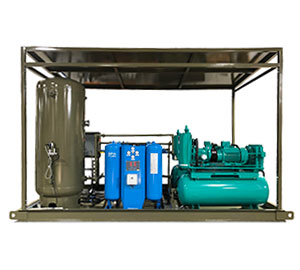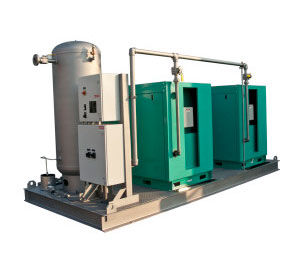

Instrument Air Skid Equipment Packages
Unimac builds equipment to supply instrument air to critical processes in a wide variety of industries. Equipment packages are built to any required specification with numerous containment and packaging options for any environment.
Instrument Air Compressor and Starting Air Compressor skids are available pre-engineered or designed and constructed to customer specifications.
Products are designed using 3D Autodesk INVENTOR 2012, and manufactured in house , adhering to standardized quality control procedures. Critical steps in the fabrication process such as cutting, welding, piping, wiring and painting are performed by fabricator-welders, mechanics and technicians experienced in their craft with a proven track record of success in producing quality equipment. The end result is a consistent level of high quality that ships on time and performs as expected.
Our 16,000 sq. ft. shop is located on over an acre with an overhead crane, welding shop, metal-cutting saws and paint booth. A 600-amp test stand allows full load testing up to 250 HP and a VFD drive allows testing with 50 Hz power, common for international voltages.
Instrument Air
Typically instrument air packages are designed to meet ANSI/ISA-S7.3 quality standards for Dew Point (-40F), Oil Content (less than 0.01 ppm), Particulate,(less than 0.01 micron)and temperature (100F). Mounted on a common skid, duplex compressors are standard, pre-piped and wired with options for wet and dry receivers, duplex or simplex dryers and a host of options for controls and instrumentation.

Starting Air
Starting Air Skids can be relatively small diesel powered reciprocating compressors for land rigs or rotary screw units driven by diesel engines or electric motors for starting large natural gas engines. Typically design pressures are 200 to 250 PSIG, duplex compressors are standard, mounted on a common skid pre-piped and wired with a wet receiver, and a host of options for controls and instrumentation.
- Onshore and Offshore environments
- Hazardous locations
- High or low ambient conditions

